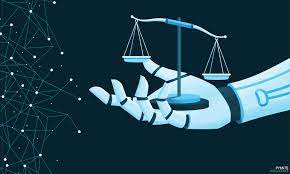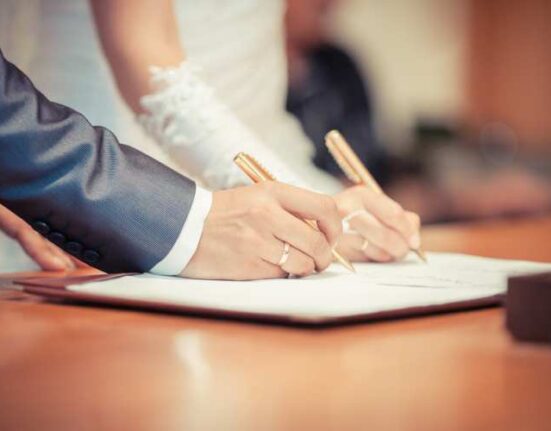This article, “The Russia-Ukraine War ” is written by Sidrat Mir, a law graduate student from the University of Kashmir
Introduction
Russia’s War on Ukraine or the so-called “special military operation”, as Putin would have you believe, is predicated on the assumption that Russian and Ukrainian people come from the same seed. that is, they are, in essence, the same people and share the same language, culture and religion. This being so, the Kremlin believed that a large number of the Ukrainian people would rally behind the invading forces in a bid to return home to their roots, so to say, and integrate with the Russian Federation to the same political, economic and cultural fate. Yet, anyone with the basic capacity of analysis and the willingness to probe can easily figure out that this is a poorly fabricated lie, curated to give at least a superficial legitimacy before the international community, to the actual aim of the War, that is, the fulfilment of Putin’s quasi-imperial goals, the continuation of the politics of eternity, and tackling his fear of Ukraine joining the NATO (North Atlantic Treaty Organisation), further shrinking the line of demarcation between the NATO countries in Europe and Russia.
Putin, the Russian historians and the Russian Elite have closed their eyes to the Ukrainian people’s right to self-determination and want to exercise this right on their behalf, claiming that the Ukrainian identity is a fabrication of the West, namely, the NATO and the European Union, aimed at fulfilling their geopolitical goals by crippling the Russian Empire; when in reality the Russian, Ukrainian and Belarusian identity is the same, owing its roots to the Eastern Slavs of the Kyvian Rus.
This idea is absurd and confusing, since Ukraine has long severed its ties with the Russian identity and has, during the thirty years since the Soviet collapse, created an identity and a Democratic State of its own coming closer and closer to Western ideologies and growing farther from that of the Russian, thanks to Putin’s continuous hostile attitude towards the country. This common identity has also engulfed within itself the Russian speakers in Eastern and Southern Ukraine who Putin claims want to reintegrate with Russia.
The country has its sense of nationalism distinct from that of the Russians, the seeds of which had been sown as early as WWI in which Ukraine fought against the Russian Empire and gained brief independence from it. Despite this, Putin, in his pre-war speech on February 21, 2021, claimed that the separate Ukrainian National identity is a fabrication of the anti-Russia elements, and has been so from its very initiation. Stating these baseless, irrational reasons, unfounded in any factual data, amongst many others, Putin launched his invasion against Ukraine.
History and Background
Ukraine was a part of the Russian Empire during the 18th and 19th Century.
But as a result of the 1917 Russian Revolution, which led to the Civil War and the fall of the Russian Empire, Ukraine gained independence from the Empire. However, this dream was short-lived, as Ukraine was captured again in 1921 and declared as one of its Republics by the newly formed Soviet Union – the USSR. During the next ten years that followed, the USSR carried out a brutal expansion destabilising Europe. This eventually led to the Cold War and the formation of NATO.
In late 1991, the Ukrainian Republic declared independence from the Soviet Union, which itself dissolved into 15 countries, including Russia. The Cold War ended but NATO remained. By 2007, Poland, Hungary, the Czech Republic, Slovenia, Slovakia, Romania Bulgaria, Lithuania, Latvia and Estonia had joined NATO, making Belarus, Ukraine and Georgia the last remaining former USSR countries between the NATO countries and Russia. However, Ukraine and Georgia wanted to join NATO too, making them prime targets for Russia.
Consequently, Russia invaded Georgia and is currently holding 20% of its territory under military occupation. [1]
In 1994 Ukraine became a partner to NATO bringing it a step closer to membership. In 2013 an association agreement with the EU was reached, but the pro-Russian Government refused to sign and chose to strengthen ties with Russia instead. This led to widespread protests demanding the signing of the agreement. After months of the protests, the then President cracked down, killing hundreds of protesters which sparked further demonstrations, leading eventually to his exit from the office and the country.
Putin knew he was losing political control over Ukraine and so he decided to use military force. In 2014 he invaded the Crimean Peninsula. The Russia-backed separatists captured Donetsk and Luhansk regions and declared them independent of Ukraine. Since then, a conflict between Russia and Ukraine has persisted, killing around 14000 and displacing around a million. [2] Putin has held these regions for nearly 10 years, destabilising Ukraine and keeping it away from merging with the West and joining NATO. In November 2021 he decided to go all in. Satellite images from January 2022 showed at least 100000 Russian troops and military equipment on the border of Ukraine.
Putin kept denying the looming threat of an invasion, yet weeks later he presented his demands to the West. He wanted NATO to stop expanding and move its military borders back to the 1997 lines. The leaders of the West rejected his demands and instead put forces on standby and reinforced military presence in Eastern Europe. Meanwhile, Russian troops continued to gather at the Ukrainian border. Russia also began conducting huge military drills at the Belarusian border with Ukraine.
On February 21, 2022, Putin declared the independence of Donetsk and Luhansk regions. Russian troops immediately crossed the Ukrainian border into these Russian-backed separatist regions under the pretence of peacekeeping and fulfilling the “popular sentiment” of reintegration with Russia. Following this, Ukraine announced a state of emergency on 23 February 2022 and President Zelensky made a direct appeal to the people. Hours later, on February 24, 2022, Putin launched a full-scale invasion on Ukraine calling it a “special military operation”.
The “operation” has continued since then.
Global response:
Following the invasion, the President of the European Commission, Ursula von der Leyen, then UK Prime Minster, Boris Johnson, and the US President, Joe Biden responded by condemning the attack, and anti-war protests broke out around the world, including in Russia despite the risk of arrest. Neighbouring nations opened borders for hundreds and thousands of Ukrainians to flee the War. NATO’s response force was activated for the first time in history and the US sent additional troops to Eastern Europe. [4]
But because Putin has the world’s largest arsenal of Nuclear Weapons and has threatened anyone who might interfere with the fulfilment of his aspirations, the world is treading lightly. Therefore, countries like the US, and European allies have responded by imposing economic sanctions leading to the economic crisis in Russia and by sending tons of military aid to Ukraine.
Since then, the invasion has continued but Ukraine is fighting back with utmost resilience and is unwilling to give up its identity.
“We are all here protecting our independence, our country. And we are going to continue to do so.” – Ukrainian President, Volodymyr Zelnsky[5]
Economic effect:
Ukraine: Ukraine, having gained independence only recently in 1991, and thus being a developing country, was making very little economic progress even before the War. Now, the War has stunted this growth and has led to further crisis. Its GDP has dropped by 30-35% in 2023, leading to the largest recession in Ukrainian history.
The War has slowed down the complete cessation of economic activities, due to the destruction of infrastructure, which has led to the loss of jobs. This has shoved Ukraine into poverty and food insecurity. According to the World Bank poverty has increased from 5.5% of the population to 24.2% in 2022. 7.1 million people have been pushed into poverty. It has become one of the most food-insecure countries in the world. The United Nations (UN) World Food Programme estimates that one in three Ukrainian households is food-insecure, rising to one in two in some areas of the east and south. [6]
Russia: Since the War started, countries like the US, and the European Union have imposed major, but restrictive economic sanctions on Russia, ensuring that the sanctions affect the War efforts, but do not affect the citizens and the European Union business. Although these sanctions haven’t deterred Putin from continuing his War efforts, they have had a considerable impact on the Russian Economy.
The World Bank, the International Monetary Fund (IMF) and the Organisation for Economic Cooperation and Development (OECD) estimated that in 2022, Russia’s gross domestic product (GDP) dropped by 2.1%. [7]
The GDP in 2023, is further expected to decline by 2.5% in the worst-case scenario (OECD) or by 0.2% according to the World Bank. The IMF expects growth in 2023 (0.7%). [8]
Sanctions have targeted the export and import of certain goods leading to declining trade. Russia was exporting fossil fuels to the global market in 2022 but sanctions on oil imports have resulted in a drop in oil revenues in January 2023, by a quarter, and by 40% in February 2023, according to the International Energy Agency. [9]
World: Ukraine and Russia before the War were the biggest suppliers of food and agriculture. The destruction of farms, soil and the displacement of farmers have led to diminished production in Ukraine and a diminished supply from Russia due to sanctions. Apart from this, Russian invasion has prevented exports from Ukrainian ports. This problem was briefly mitigated when Russian and Ukrainian officials signed the Black Sea Grain initiative in July 2022, allowing safe passage for Ukrainian grain exports from three ports in the Black Sea. But in July 2023, Russia backed out of the agreement. This has created a global food insecurity especially in the poor and developing countries since before the war Russia and Ukraine were the world’s largest exporters of wheat and sunflower oil. The Black Sea Grain initiative had dealt with this issue for a period, but under it food mainly went to wealthier countries. This has hampered the realisation of the “global food security goal” of the UN sustainable development goals by 2030.
Moreover, the sanctions on Russia have also resulted in an increase in energy prices in the international market. [10]
Conclusion:
The illegal and unjustifiable War on Ukraine has been going on for two years now, creating an Economic and Monetary crisis within Ukraine, Russia, and throughout the rest of the world. If the War efforts continue to go unhampered, Ukrainians face a threat of death by starvation. And while the sanctions on Russia aren’t as harsh as one might imagine them to be, the Russian Economy is shrinking, and the general public still faces a threat of recession at home. At a Global level, fuel prices may increase even further, and poorer countries may be shoved to the brink of starvation.
[1] https://en.m.wikipedia.org/wiki/Russian-occupied_territories_in_Georgia#:~:text=Currently%2020%25%20of%20Georgia’s%20internationally,the%20Six%20Point%20Ceasefire%20Agreement.
[2] https://www.crisisgroup.org/content/conflict-ukraines-donbas-visual-explainer#:~:text=Between%20then%20and%20early%202022,Luhansk%2C%20also%20known%20as%20Donbas.
[3] https://amp.cnn.com/cnn/2022/02/25/politics/nato-ukraine-russia/index.html
[4] https://theconversation.com/ukraine-us-deploys-more-troops-in-eastern-europe-heres-how-it-compares-with-the-cold-war-186082#:~:text=Biden%20had%20already%20approved%20an,than%20100%2C000%20troops%20in%20Europe.
[5] . https://www.uscannenbergmedia.com/2022/02/25/a-firsthand-account-of-what-its-like-to-be-in-ukraine-right-now/
[6] https://www.economicsobservatory.com/ukraine-whats-the-global-economic-impact-of-russias-invasion#:~:text=Ukraine’s%20economic%20output%20is%20now,%2C%20if%20only%20by%200.5%25.
[7] https://www.consilium.europa.eu/en/infographics/impact-sanctions-russian-economy/
[8] https://www.consilium.europa.eu/en/infographics/impact-sanctions-russian-economy/
[9] https://www.consilium.europa.eu/en/infographics/impact-sanctions-russian-economy/
[10] https://www.economicsobservatory.com/ukraine-whats-the-global-economic-impact-of-russias-invasion#:~:text=Ukraine’s%20economic%20output%20is%20now,%2C%20if%20only%20by%200.5%25.




Leave feedback about this